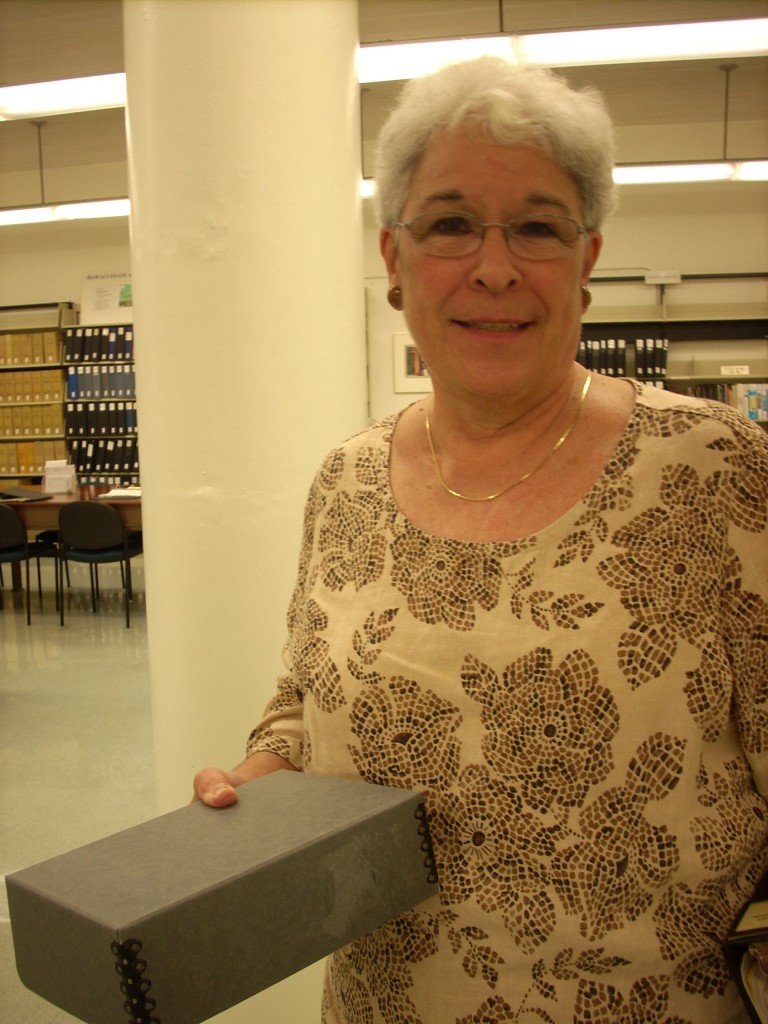I knew I’d found a soul sister who also loved research when I clicked onto Amy Stillman’s blog and found her posting, “Adventures in Archives.”
For the past three years, I’ve been making trips to the treasure trove of Hawaiian historical archives located in Honolulu. Amy Ku‘uleialoha Stillman, a Harvard-educated associate professor of music and American culture at the University of Michigan, likewise had just arrived on the islands and couldn’t resist making a trek to the Hawaii State Archives, with a long list of things just to “spot check.”
She signed into the archive, put her purse into a locker, and fired up her Mac. With the help of archivist Luella Kurkjian, who safeguards the most precious manuscripts locked away in the safe as chief of the archives’ historical records branch. Amy found a lot more than she’d bargained for, opening up a “whole new can” of scholarly worms, she told me. Ah, happiness!
Amy, who is a Hawaiian, will serve as the Dai Ho Chun Distinguished Visiting Professor at the University of Hawai‘i at Mānoa. A meticulous scholar and powerful writer, I first came across her work in an article she published in 1989 in The Hawaiian Journal of History.
Titled “History Reinterpreted in Song: The Case of the Hawaiian Counterrevolution,” Amy wrote the article when she was still a doctoral candidate in musicology at Harvard, where she’d gone after studying at the University of Hawai‘i. I read an article in the current issue of Honolulu Magazine that Amy had just returned to her home state for a year, so I decided to email her, asking if we could meet.
Not only did she say “yes,” but she offered to pick me up, drive me to a marvelous Hawaiian-Vietnamese restaurant called Hale Vietnam, and then return me to the hole-in-the wall where I stay when I’m digging through the archives. All I can say is mahalo, Amy, for the chance to spend an evening with you and to share that heavenly lychee sherbert – real ono!
But what really hooked me were Amy’s descriptions of her recent discoveries in the archives concerning Queen Liliʻuokalaniʻs 1897 manuscript “He Buke Mele Hawaii.” The excitement and sheer staying power that drives her as a researcher is inspiring and it comes through in her series of postings about what she found. Take a look at her postings, especially her praise of the Hawai‘i State Archives staff.
Did I mention she’s not just a scholar, stuck in dusty archives, but also the director of the Great Lakes Hula Academy in Ann Arbor, Michigan, and producer of a Grammy-winning album ‘ikena, by singer Tia Carrere and singer/songwriter and co-producer Daniel Ho? Amy’s latest project as a producer is an album of some of the greatest hits of ancient hula, called Ancient Hula Hawaiian Style, Volume 1: Hula Kuahu, through Michael Cord’s Hana Ola Records.
On the drive back to my place, I asked Amy what music she’d recommend for me. Aside from her post on “Top Ten Hawaiian Albums for Newbies,” she also suggested a group from Michigan called The Rose Ensemble, based in St. Paul, Minnesota.
A reviewer of their album Nā Mele Hawai‘i wrote, “You will never hear Aloha Oe quite the same way again after hearing Ke Aloha a ka Haku (The Queen’s Prayer, track 27), written by Lili’uokalani from her prison cell in 1895, and the earlier and later works all have stories to tell as well. Very highly recommended to anyone with the slightest interest in Hawaii, regional American music, or issues of colonialism in general.”
Amy, not surprisingly, helped produce that CD, too.




